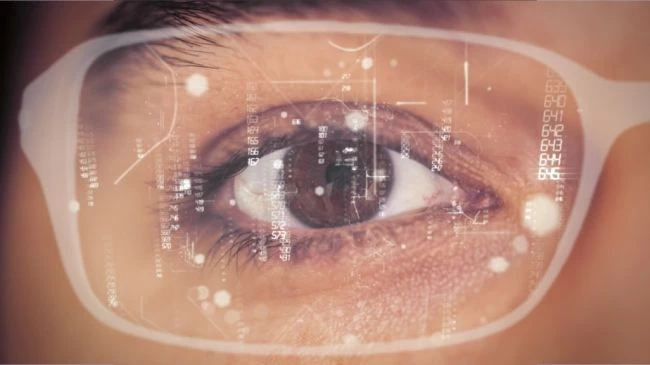
Partner Article
What Blippar’s acquisition of Layar really means for the print industry
Augmented reality is set to take both US and UK commerce by surprise in the run up to the holiday season this year, with benefit for advertisers working both in print and digital sectors.
Blippar’s recent purchase of augmented reality rival Layar, an app-based company that allows you to use your smartphone’s camera to reveal digital information on print ads, will lead the AR tech trend.
While many marketer’s believe QR codes to be a fad that will never take hold, the same may not be true for AR with it’s burgeoning popularity. In March, Layar announced the availability of its app for Google Glass, bringing even further attention, and use-cases, for the technology.
So What Does This Mean for Print?
For starters, AR codes need to be printed. The fundamental purpose of the technology is to create a seamless relationship between physical and digital worlds, and facilitate multichannel experiences. Printed advertising is as physical as it gets, but it’s also being blindsided as advertisers steadily steer towards digital assets.
However, this does not signal the death of print. In fact, marketers and advertisers are again recognising the benefit of physical outreach materials in an ever crowded online atmosphere. While everyone is jumping on the content marketing and social media bandwagon, savvy admen (and women) have reverted to traditional printed materials to get their message in front of people in the physical world - in people’s hands when they leave a trade conference, open a magazine, look at a billboard or reach for their mail in the morning.
This is a sweet spot for technologies that take this trend one step further. We have learned that digital can be overcrowded, and that printed marketing materials still resonate with customers. Bringing them together in meaningful and interesting ways is what apps like Blippar and Layar are doing.
The key is execution. Innovative brands like Nike and Mabeline have come out with really interesting AR campaigns over the past year, which have proven that it’s gaining attention and buy in at ad agencies and departments.
What the publishing industry needs to do is leverage their relationships with technology companies and form partnerships that will increase the awareness and advantages for joining print and digital advertising.
Here are some ways that AR technology can be used in print:
1) Train station posters can become more informative and engaging. Commuters the world over will agree that train rides are boring and most of the time you’re engaged with your phone. Offering a release from mundane ads and giving people a chance to engage with branded content has the potential to be both useful and memorable.
2) Magazines can become more shoppable. Most consumers will agree that magazines are nice to peruse, but they offer no direct connection to purchasing products, other than a printed URL or phone number. AR codes offer the chance to bring products to life, give them a 360 degree view of a dress, and buy it on the spot. No need to fold the corner of the page for later.
3) Trade publications can become more interactive and collectible. An excellent example was the BBC Music Magazine’s May cover, which used AR to allow users to watch the Proms launch film, take a selfie with Sir Henry Wood or subscribe to the digital edition of the magazine. This allowed fans or casual readers of the magazine to engage further, learn more about the BBC’s biggest summer concert event, and become subscribers. Two out of three actions lead readers down a purchase path, while the selfie was a current and enjoyable experience that encouraged social sharing, and made viewers feel they weren’t being sold to directly.
4) Recipes can bring the senses further into play. Recipes in magazines are usually accompanied by beautiful photography, but these alone don’t lead people to go to the supermarket and buy food products. Food brands like Marmite have used AR codes to further inform viewers about the possibilities of using marmite in recipes, making them come to life before your eyes. While we are still a ways away from introducing smells or tastes in digital devices, the sound of sizzling steaks and the movement of food off the page are other ways that brands can entice viewers to get cooking with their products.
Take Away
The great thing about Blippar’s acquisition is that it points to growth in this industry, which has the potential to bring print back to life and create a real connection between our online and offline selves. The challenge will be in how brands use this technology to make creative and engaging content for their viewers and readers in the coming years.
This was posted in Bdaily's Members' News section by Victoria Elizabeth .
Enjoy the read? Get Bdaily delivered.
Sign up to receive our popular morning National email for free.








 Confidence the missing ingredient for growth
Confidence the missing ingredient for growth
 Global event supercharges North East screen sector
Global event supercharges North East screen sector
 Is construction critical to Government growth plan?
Is construction critical to Government growth plan?
 Manufacturing needs context, not more software
Manufacturing needs context, not more software
 Harnessing AI and delivering social value
Harnessing AI and delivering social value
 Unlocking the North East’s collective potential
Unlocking the North East’s collective potential
 How specialist support can help your scale-up journey
How specialist support can help your scale-up journey
 The changing shape of the rental landscape
The changing shape of the rental landscape
 Developing local talent for a thriving Teesside
Developing local talent for a thriving Teesside
 Engineering a future-ready talent pipeline
Engineering a future-ready talent pipeline
 AI matters, but people matter more
AI matters, but people matter more
 How Merseyside firms can navigate US tariff shift
How Merseyside firms can navigate US tariff shift